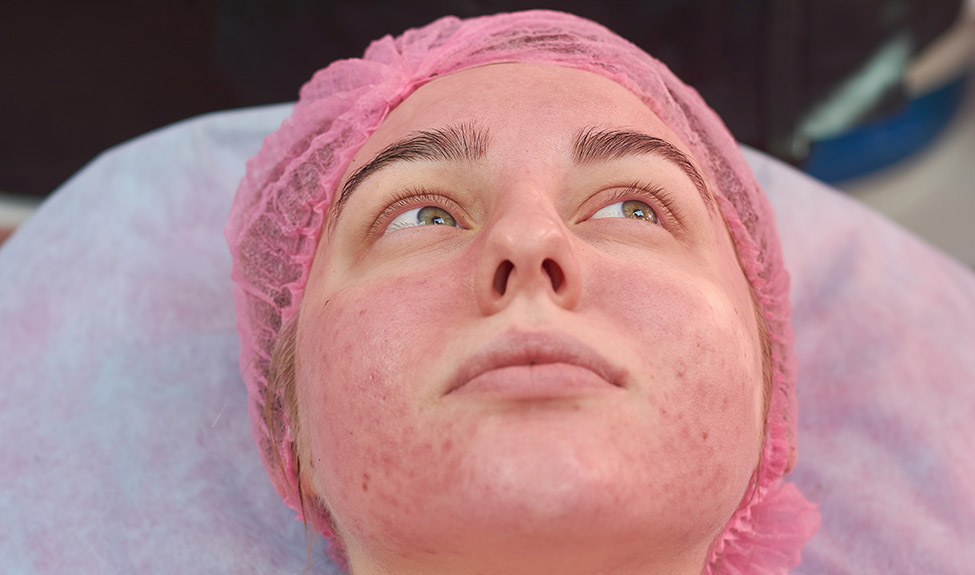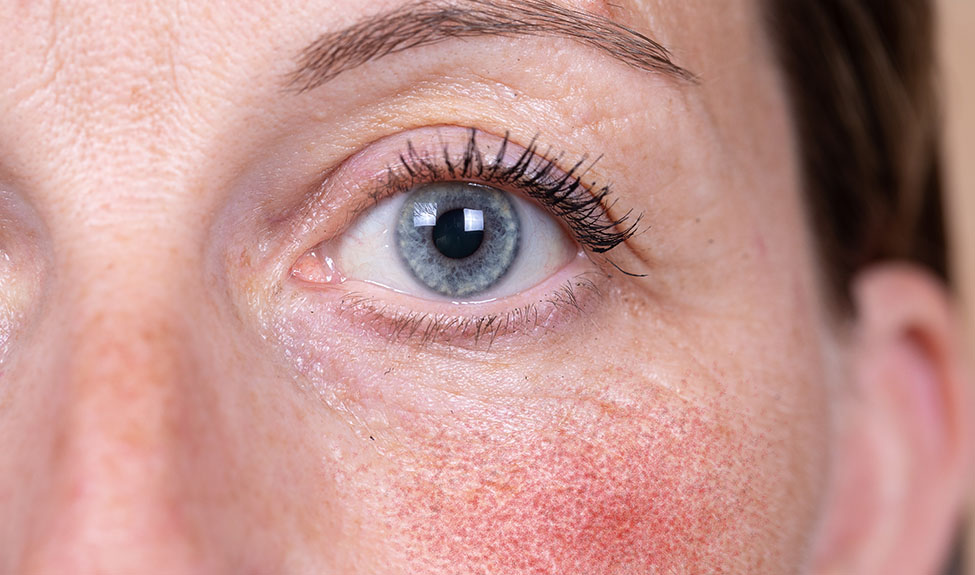Often mistaken for acne, rosacea is a chronic skin condition characterized by flushing and visible blood vessels in the face. This condition is most common among middle-aged Caucasian woman, so it’s well worth making sure your spa staff are educated in identifying and managing the condition.
The underlying cause of rosacea remains unknown, but a combination of heredity, environmental factors, and an overactive immune system may be involved. Most commonly seen in fair-skinned people, rosacea affects an estimated 16 million Americans. Though the condition cannot be cured, there are many options for management and symptom relief.
While it’s best for individuals with rosacea to follow their doctor’s recommendations for treatment, regular facials and at-home skincare are essential for managing symptoms. Read on to learn how to adjust your spa treatments for clients with rosacea.
What Estheticians Need to Know About Rosacea
With any medical condition, the most important thing any esthetician should know is that it is inappropriate to try to make diagnoses or recommend treatments. It’s well within an esthetician’s scope of work to identify aspects of the skin’s condition such as redness or rash. If the issue seems to be more than temporary irritation or reactivity, however, it’s best to advise the client to see their doctor to obtain a formal diagnosis and treatment recommendations.
If the client has already obtained a diagnosis and is simply seeking help managing their rosacea, professional facials can certainly be beneficial. Start the session by asking questions to help identify the client’s triggers. While rosacea is most commonly triggered by food, beverages, and environmental factors, some people react to certain cosmetic or skincare products. It’s important to determine how reactive the client’s skin is before administering any products.
Skincare for rosacea should be focused on soothing the skin and reducing redness. Some individuals with rosacea also experience dryness, so hydration should be a priority as well. Rosacea can also contribute to skin sensitivity, so be sure to include products that help restore the skin barrier.
Calming Facial Treatment Tips for Clients with Rosacea

Before starting a facial treatment for clients with rosacea, it’s important to ask questions. Ask the client what treatments they’ve tried in the past and how well their skin tolerated them. If the client isn’t able to identify any specific products which caused a reaction, keep things as simple and non-irritating as possible to minimize the risk for making a flare-up worse.
The goal of a professional facial for clients with rosacea is to reduce redness and inflammation while hydrating the skin to strengthen its natural protective barrier.
Here are some simple steps to include in a facial for rosacea:
- Start with a gentle cleanse. Use a gentle, non-irritating cleanser to start off the treatment. Avoid scrubs and foaming cleansers but consider a medicated cleanser that contains zinc.
- Calm down inflammation. To reduce inflammation, use a combination of green tea antioxidants and caffeine. Avoid vitamin C because it may be too acidic for rosacea-affected skin.
- Exfoliate gently when appropriate. If your client has facial scaling or clogged pores, exfoliation may be beneficial but be careful how you do it. Stick to gentle options like soft or gel textured gommages.
- Address redness and irritation. Treatments that tighten the blood vessels may help minimize redness and irritation. Centella asiatica for example, helps with redness and inflammation.
- Focus on moisturization. Include an intensive moisturizing mask in the treatment as well as a lasting moisturizer. Choose a product that locks in moisture and locks out irritants.
- End with sun protection. While SPF should be included in most spa facials, it is particularly important for clients with rosacea. End with a fragrance-free, broad-spectrum product that contains SPF 30 or higher for the best protection.
Spa professionals should be aware not only of which products are best for clients with rosacea but also which should be avoided. Astringents, alcohol, and artificially fragranced products are particularly problematic but other potentially irritating ingredients including retinol, menthol, and eucalyptus oil. When possible, patch test a new product before administering it.
Recommendations for At-Home Management
View this post on Instagram
Skincare isn’t a “one-and-done” thing. Regular monthly facials are essential, especially for the management of chronic skin conditions like rosacea, but a lot of the healing happens at home.
Throughout the treatment process, make sure your staff explain the products they’re using and their purpose to set the stage for at-home recommendations. Education is an important component of professional skincare treatments and the better your clients understand what’s going on with their skin, the better equipped they will be to continue the work at home. Recommendations for daily skincare products can help your clients achieve the results they want.
Here are some important points to hit with at-home recommendations for rosacea management:
- Recommend clients include a hydrating overnight mask in their skincare routine twice a week. Humectants like hyaluronic acid which draw moisture into the skin can be particularly beneficial.
- Suggest a fragrance-free, hypoallergenic daily moisturizer. A daily moisturizer that helps protect against environmental irritants may be beneficial as well.
- Encourage your client to stick to a simple routine of products they know their skin can tolerate. They should avoid astringents, harsh scrubs, and products containing retinol or high levels of salicylic acid.
- Make sure your clients understand the importance of checking ingredients in makeup as well as skincare products. Recommend pressed powder over liquid foundation and make sure everything is non-comedogenic.
- Highlight the importance of sun safety. Recommending SPF should be standard practice, but sunburn can be a strong trigger for rosacea flare-ups in particular.
As is true with any at-home skincare routine, it’s important for clients with rosacea to make adjustments based on their individual experience. Some people with rosacea react to certain skincare ingredients while others are more affected by environmental triggers. Encourage clients to pay attention to rosacea flare-ups to see if they can identify the trigger and thus avoid it in the future.

